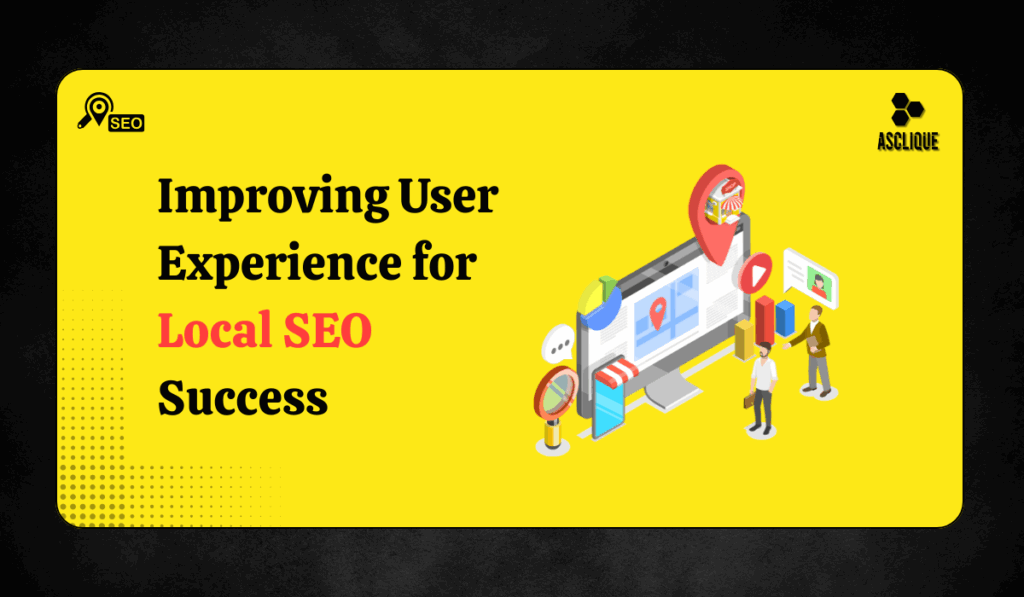When a local person looks for a product or service you provide, you’d like your business to appear—and not only anywhere on the map, but in the top ones. However, what most fail to realize is that local search success isn’t merely a matter of keywords or citations—it’s also a matter of how good an experience your website provides. In fact, Google’s algorithms are written to reward sites that provide useful, speedy, and simple-to-use experiences, particularly on mobile.
Let’s unpick how you can focus on improving user experience for local searches and, in doing so, rank higher locally.
Why User Experience Matters in Local SEO
User experience (UX) is the way that someone feels when they are on your site—can they get what they are looking for? Is it quick? Does it do the job on their phone?
According to a Think with Google survey, 40% of users will visit a competitor’s website instead of returning to a mobile site they had trouble accessing, while 61% of users are unlikely to do so. That means even if your business is listed in local search, a negative experience can send potential customers running before they even reach out to you.
Local searches tend to be in a hurry. Users need answers quickly. If your site is slow to load or confusing, users won’t wait—they’ll leave.
Make Your Website Mobile-Friendly
Over 70% of local searches are performed on mobiles, so your site needs to be easy to use from a smartphone.
Here’s how to enhance your mobile UX:
- Utilize responsive design so content adjusts according to screen size
- Use large buttons and make them easy to click
- Minimize pop-ups that disrupt the experience
- Make phone numbers and addresses clickable
Use Google’s Mobile-Friendly Test to test your mobile-friendliness. An optimal mobile experience can reduce bounce rates and drive more local conversions.
Improve Page Speed for Faster Local Results
Speed does matter—particularly in local search. Google has assured that page speed is a ranking signal, and consumers expect websites to load in less than 3 seconds.
Ways to increase your speed:
- Compress images with tools such as TinyPNG
- Make the browser cache work
- Utilize a fast, trusted hosting service
- Minimize the use of resource-intensive scripts and plugins
Use PageSpeed Insights to check the speed of your website. Speedier pages don’t enhance rankings—taylor engagement, they do.
Simplify Navigation to Help Users Find Local Info Fast
Local users typically search for essential information: your address, hours, services, or phone number. If they need to search past several pages to access it, that’s a bad user experience.
Here’s the way to minimize navigation:
- Put essential links (Contact, Locations, Services) in your top navigation
- Include a footer with address, phone number, and links
- Utilize a locally-focused homepage with easy access to important information
- Add a “Find Us” or “Visit Us” section above the fold
Build Location-Specific Landing Pages
When your business caters to multiple regions, having distinct landing pages per place benefits both SEO and UX.
A good local landing page has:
- City name in title and URL
- A brief summary of services available in that place
- Local customer testimonials
- A Google Map embed
- Contact information tailored for that place
These pages also enable you to rank for “near me” and city-based search queries.
Add Local Trust Signals to Build Credibility
Trust is a significant element in the user experience. When individuals arrive on your site through a local search, they want to believe that you exist, are close to them, and can be trusted.
Trust-building advice:
- Add recent customer testimonials or reviews
- Show local awards or partnerships
- Use authentic photos of your location, team, or storefront
- Add business hours and show updates if you’re closed for holidays
You can also integrate Google reviews or Facebook ratings to add credibility directly on your site.
Use Clear Calls-to-Action for Local Users
Your website should direct users to the next action, be it making a reservation, calling, or coming in person.
Effective local CTAs include:
- “Call Now for a Free Estimate”
- “Visit Our San Diego Store Today”
- “Book Your Appointment inNewyork
- “Get Directions to Our Office”
Make your CTAs simple, location-based, and discoverable. Buttons must be visible and responsive.
Keep Local Content Updated and Relevant
Google prefers fresh and locally pertinent content. Blogging, guides, or news concerning your service area promotes authority and better user engagement.
Ideas for local content:
- “Top Things to Do in Newyork This Weekend”
- “How Our [Service] Helped [Neighborhood] Families”
- “Local Customer Stories and Before/After Results”
- Event announcements or community highlights
Updated content shows users—and search engines—that your business is active and relevant in the local area.
Monitor and Improve Your UX with Real Data
Improving UX isn’t a one-time task. Utilize data to monitor user behavior on your website and make necessary adjustments.
Tools to monitor user experience:
- Google Analytics – Check bounce rate, session duration, and mobile vs. desktop usage
- Google Search Console: Verify Core Web Vitals and mobile UX issues
- Hotjar or Microsoft Clarity – Observe heatmaps and user clicks
- Surveys or feedback forms – Ask customers how simple it was to use your site
These data allow you to stay one step ahead of UX problems before they affect your search rankings.
Conclusion
If you desire to appear higher in local search and ultimately turn visitors into buyers, improving user experience for local searches is necessary. From mobile-friendly and fast load times to local trust indicators and fresh content, it all makes a difference.
When customers in your area are looking for businesses like yours, ensure that their experience on your site is seamless, useful, and reliable. Google will take notice—and so will your clients.
FAQ’s
How does user experience affect local SEO rankings?
Bounce rate, mobile-friendliness, and page speed are user experience signals that influence the way Google ranks your website in local search.
What is one easy way to improve UX for local searches?
Making your website mobile-friendly is one of the fastest and most effective changes for local UX.
Do I need separate pages for each location I serve?
Yes. Local landing pages assist search engines and users in locating information that’s specific to their location.
How often should I update local content?
Ideally once or twice a month. Frequent updates maintain your content’s freshness and relevance to users and search engines.

